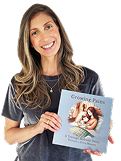Ever stared at a blank page, waiting for inspiration to strike? Spoiler: It’s not coming. At least, not without a little help. Writing isn’t just about creative bursts of genius—it’s about structure, discipline, and knowing what comes next. That’s where a writing checklist comes in.So, what is a writing checklist? Simply put, it’s your roadmap to a polished, compelling story. It ensures you don’t forget the crucial elements—like strong characters, a gripping plot, and dialogue that doesn’t sound like two AI bots having a casual chat. Think of it as the ultimate cheat sheet for crafting a narrative that actually works.
Even the best storytellers—from bestselling novelists to Hollywood screenwriters—rely on a narrative writing checklist to keep their ideas from spiraling into chaos. Without one, it’s easy to end up with plot holes big enough to swallow your entire story.
Step 1: Brainstorming – Let the Creative Chaos Commence!
Before you write a single word, you need ideas—lots of them. Good ones, bad ones, weird ones, and the kind that make you question your own sanity. Because here’s the truth: bad ideas are just ideas that haven’t found their purpose yet.
The Destruction of a Level 3 Brainstorm
The brainstorming phase is where you let your creativity run wild. No filters, no overthinking, no inner critic whispering, This is terrible. The goal? Generate as many ideas as possible so you can sift through the chaos and find the gold.
Checklist of Techniques to Spark Your Next Great Story:
- Mind Maps – Start with a central concept (a character, a setting, a theme) and branch out with related ideas. This helps uncover unexpected connections.
- “What If” Scenarios – Take an ordinary situation and flip it on its head. What if your protagonist could hear people’s thoughts—but only when they’re lying? What if time travel existed, but only for 30 seconds at a time? These questions fuel original stories.
- Character Sketches – Create a detailed profile of your main characters. What are their fears, flaws, and secret dreams? Sometimes, a great character is all you need to build an unforgettable story.
At this stage, nothing is off-limits. The more ideas you gather, the more raw material you have to work with. So go ahead—brainstorm like a mad scientist. Your future masterpiece depends on it.
Step 2: Plot Like a Pro – No More Saggy Middles
Your plot is a rollercoaster—make sure it doesn’t break down halfway through. Nobody wants to be stuck on a ride that starts with a thrilling climb, slows to a crawl, and then abruptly ends with a disappointing fizzle. A strong story needs a well-paced, structured plot to keep readers hooked from start to finish.
The Essentials of Narrative Structure
Every great story follows a simple but powerful formula:
- The Beginning (Setup & Hook) – Introduce your main character, their world, and the central conflict. Your opening should grab readers immediately—no long, meandering backstory dumps allowed.
- The Middle (Rising Action & Conflict) – This is where things get interesting. Tension should build, stakes should rise, and obstacles should appear at just the right moments to keep readers engaged. This is also where many writers lose momentum (ahem, saggy middle syndrome).
- The End (Climax & Resolution) – The moment everything has been leading up to. Resolve the conflict in a satisfying way—loose ends should be tied up unless you’re deliberately leaving room for a sequel.
The Story Writing Checklist That Saves Your Plot:
A writing checklist helps you avoid common pitfalls like plot holes, pacing issues, and underdeveloped conflicts. Ask yourself:
- Does my beginning hook the reader within the first few pages?
- Is my middle full of rising tension, or does it drag?
- Does every scene serve a purpose, pushing the plot forward?
- Is my climax the most exciting moment of the story?
By following a writing process checklist, you ensure your plot stays tight, engaging, and—most importantly—doesn’t break down halfway through the ride. Buckle up and keep the momentum going!
Step 3: Characters That Don’t Bore Us to Death
Nobody wants to read about a hero as bland as unseasoned tofu. Your characters are the heart of your story—make them beat with purpose. Readers don’t just follow plots; they follow people. If your characters feel real, your story will, too.
Creating Dynamic, Believable Characters
Great characters aren’t just names on a page—they have fears, dreams, quirks, and contradictions. They make mistakes. They have reasons for what they do. Your protagonist should want something badly, and your antagonist should have a compelling reason to stop them.
And please, for the love of storytelling, don’t let your villain’s only motivation be “just because.” If their entire evil scheme boils down to “felt like it,” try again.
The Story Writing Checklist for Strong Characters:
- Do they have clear goals? (A character who doesn’t want anything is a snoozefest.)
- Are their motivations believable? (Would a real person act this way?)
- Do they grow or change? (Static characters = boring characters.)
- Do they have flaws? (Perfect people don’t exist—and they don’t make good characters.)
- Does their dialogue sound like them? (Not every character should talk the same way.)
A story writing checklist ensures your characters aren’t just props moving through a plot. Give them depth, give them conflict, and most importantly—make us care about them.
Step 4: Dialogue – Say It Like You Mean It
Bad dialogue is like a flat soda—technically drinkable, but deeply disappointing. Great dialogue, on the other hand, crackles with energy, reveals character and moves the story forward. The trick is to make it sound natural without being boring.
Story Writing That Feels Alive
Real conversations are full of “uhs” and small talk, but if you wrote that exactly as it happens, your readers would fall asleep. At the same time, dialogue shouldn’t feel like a script written by two robots having tea (“Ah, yes, John. As you know, we are brothers, and our father is a doctor.”).
The Dialogue Writing Checklist:
- Avoid info dumps. If a character is explaining something they wouldn’t realistically say out loud, find a better way. (“As you know, Bob…” is a crime against storytelling.)
- Give each character a unique voice. No two people talk the same way. Consider word choice, sentence structure, and tone.
- Keep it snappy. If your character takes five paragraphs to say “I’m mad at you,” trim it down.
- Read it out loud. If it sounds unnatural in your own voice, it’ll sound unnatural in the reader’s head.
- Use subtext. People rarely say exactly what they mean. Let emotion and tension simmer beneath the words.
Dialogue should feel alive—sharp, purposeful, and full of personality. If it sounds robotic, stilted, or like filler, rewrite it until it sings.
Step 5: Setting & Atmosphere – Make It Breathe
A great setting isn’t just a backdrop—it’s a living, breathing part of your story. If your world feels like a cardboard cutout, your readers won’t feel immersed. But if you drown them in paragraphs of description (looking at you, overly detailed fantasy prologues), they’ll skim ahead.
The trick? Balance.
Crafting an Immersive Setting Without Overloading Readers
Your setting should feel alive—like a character in itself, not just wallpaper. Instead of listing details like a travel brochure, show how the environment interacts with your characters. The mood, weather, and atmosphere should reflect or contrast with the story’s tone.
Compare these two descriptions:
The forest was dark. The trees were tall. The air smelled damp. (Yawn.)
The forest swallowed the last rays of sunlight, twisting shadows between towering pines. The air was thick with the scent of rain and pine needles, sharp and fresh. (Now we’re talking.)
The Writing Process Checklist for Strong Settings:
- Do the details serve a purpose? (If it doesn’t enhance mood or plot, cut it.)
- Is it shown through action? (Let characters interact with their environment.)
- Are all five senses engaged? (Don’t just describe how it looks—what does it smell, sound, or feel like?)
- Does it match the story’s tone? (A horror scene in a sunny meadow? Make it eerie.)
When done right, your setting pulls readers in and keeps them there. Let it breathe, but don’t let it suffocate your story.
Step 6: Editing – The Magic of Story Writing Happens Here
You did it. You finished your first draft. Now, take a moment to celebrate—and then prepare to tear it apart. Because here’s the truth: your first draft is just the beginning. No one (not even literary legends) writes a masterpiece on the first try. Even Hemingway rewrote (imagine there being 39 alternate endings to A Farewell to Arms)—so you’re in good company.
Making the Cut to Make the Cut
Editing is where the magic happens, where good stories become great, and where you turn that messy draft into something truly worth reading. Editing isn’t about making your story perfect—it’s about making it better.
The Narrative Writing Checklist for Self-Editing:
- Cut the fluff. If a sentence, scene, or chapter doesn’t serve a purpose—goodbye. Every word should earn its place.
- Strengthen weak scenes. Does every chapter push the story forward? If not, revise or remove.
- Check pacing. If your middle drags, tighten it. If your ending feels rushed, expand it. Your story should flow, not stall.
- Read it aloud. Awkward sentences, clunky dialogue, and pacing issues become glaringly obvious when spoken.
- Hunt down clichés. If it feels predictable, twist it. Surprise your reader.
- Polish, but don’t obsess. Perfect is the enemy of done. At some point, you have to let go.
With a solid narrative writing checklist, you’ll know exactly what to fix. Now, grab your red pen (or delete button) and get to work.
Your Story Writing Journey Starts Now
Writing a great story isn’t about waiting for inspiration to strike—it’s about having the right tools to guide you. A story writing checklist keeps you focused, helps you avoid common pitfalls, and ensures that your ideas actually make it to the page in a way that works.
From brainstorming wild ideas to crafting immersive settings, sharpening dialogue, and polishing every scene—a checklist gives you a roadmap to follow. No more staring at a messy draft wondering what’s missing. No more saggy middles, flat characters, or endings that fall apart.
Because here’s the truth: writing isn’t about being perfect—it’s about being fearless. It’s about getting your ideas down, refining them, and trusting the process.
So what’s next? Create your own writing checklist, or download one and start writing today! Your story is waiting to be told. Are you ready to write it?
Want more expert writing tips and resources? Spines has you covered. Check out our latest guides and tools to take your storytelling to the next level!
Your Publishing Journey Awaits – Start NowFAQs – Story Writing Checklist
Q1: What does a writing checklist include?
A writing checklist covers all the key elements needed to create a strong, polished piece. It typically includes sections for idea development, structure, clarity, character depth (for narratives), grammar, and final revisions. For story writing, a checklist might focus on plot consistency, engaging dialogue, and immersive settings, while an essay writing checklist would emphasize thesis clarity, logical flow, and supporting evidence.
Q2: What is the basic sentence checklist?
A basic sentence checklist ensures that each sentence is clear, grammatically correct, and contributes to the overall message. When reviewing your work, ask:
- Does the sentence have a subject and a verb?
- Is it free of run-ons and fragments?
- Does it flow smoothly and logically?
- Is the punctuation correct?
- Does it enhance the clarity of the story writing or argument?
Q3: How do you know that your writing checklist is complete?
Your writing checklist is complete when it covers all essential aspects of your work, from brainstorming to final edits. A solid narrative writing checklist should ensure that characters are well-developed, plot holes are eliminated, and pacing is strong. For essays, a writing process checklist should confirm that arguments are well-supported and the structure is logical. The final test? If you follow the checklist and your writing improves, it’s doing its job!
Q4: Is a checklist considered a rubric?
Not exactly. A writing checklist is a self-editing tool that helps writers ensure their work is well-structured and complete, while a rubric is typically used for grading or evaluating writing based on specific criteria. However, both serve as guides to improve writing and maintain quality.
Q5: What is a writing checklist?
A writing checklist is a step-by-step guide that helps writers track their progress and ensure they include all essential elements in their work. Whether it’s a story writing checklist for novelists or a writing process checklist for students, this tool streamlines the creative process and prevents common mistakes.
Q6: How do I write an essay checklist?
To create an essay writing checklist, focus on these key areas:
Introduction: Does it have a strong hook and clear thesis statement?
Body paragraphs: Do they contain well-supported arguments with evidence?
Structure & flow: Are ideas logically connected and easy to follow?
Grammar & style: Is the writing clear, concise, and free of errors?
Conclusion: Does it effectively summarize the main points without repeating them?
By following a structured writing checklist, you can confidently refine your work and produce clear, compelling writing.








